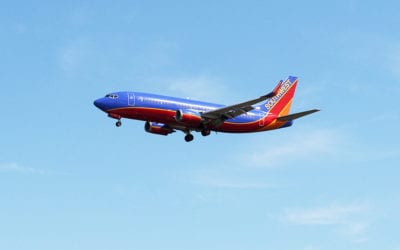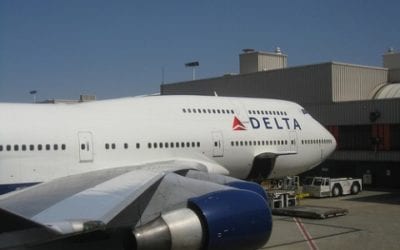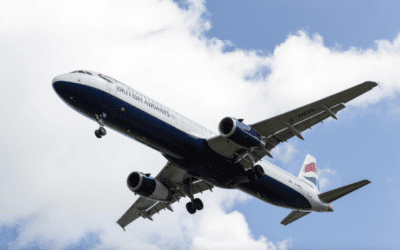Is YTB’s commission of a $6 million, 130-foot, 50,000 pound Styrofoam replica of the Statue of Liberty, for its upcoming convention in St. Louis, a symbol of the best of what America has to offer the world — or the worst?
This August, YTB (Your Travel Biz), the Internet travel services business with $141 million in revenue last year, is holding its annual travel convention at the Edward Jones Dome in St. Louis, Missouri. Beryl Martin Co., has been commissioned by YTB to create a replica of Lady Liberty to be erected “center stage” at their convention.
YTB chairman Lloyd Tomer said the company wanted a replica of the icon because it’s an election year.
“It would be a great time to be reminding people of our country, where we came from, and the free enterprise system that Ms. Liberty represents,” he added.
I don’t know about you, but I always thought that with the “Lady’s” left foot trampling broken shackles, her torch signifying enlightenment, and the tablet she carries declaring freedom, the Statue of Liberty symbolizes freedom from oppression and tyranny for homeless “masses yearning to breathe free(dom),” not capitalism.
In the 21st century, we are trying to come to grips with global warming, and other serious environmental threats to the air we breathe, the water we drink, and the earth on which we live. Rather than a symbol of what’s good about American society today, isn’t YTB’s 25 ton chunk of Styrofoam an expression of contempt for American Society, and what millions of Americans, and American travelers, are trying to accomplish to preserve our nation’s and the world’s future?
Forget for a moment, the environmental impact of 25 tons of unnecessary Styrofoam waste when it finally must be sent to the landfill, and it will go there, I assure you, once the town to whom it will be donated begins noticing it’s seriously degrading, even with its plastic coating, as it heats up in the sun and degrades from that heat.
Forget for a moment that Styrofoam is made from petroleum, a non-sustainable and heavily polluting resource which would be better used for more productive purposes.
Forget for a moment the potential health hazards on our environment created by 25 tons of degrading Styrofoam, which according to the National Bureau of Standards and the EPA could be very serious.
Instead, just consider the impact of hauling this huge chunk of Styrofoam when complete. By their own admission, it’s going to take 48 tractor trailers to haul the “Lady” the 301 miles from Gary, Ind., to St. Louis. Then, to fulfill the donation of the replica to Crown Point, Ind., it will be a trip of 300 more miles.
At eight miles per gallon for a typical tractor trailer today, that’s 3,606 gallons of diesel fuel we don’t need polluting our air, or choking our lungs.
With so many Americans engaged in sustainable ecotourism, attempting to minimize the environmental impact of travel, reducing to the smallest extent possible consumption of non-renewable resources, and conserving the environment while traveling, isn’t YTB’s chosen symbol one which flies in the face of preserving America for its “posterity?”
With so many incredible travel destinations of the world in grave danger — Antarctica, the glaciers of Alaska, Machu Picchu, Ramat Hanadiv Park on Mount Carmel, the coral reefs of the Caribbean, and the Galapagos, to name just a very few — why is YTB contributing to the problem, instead of using the $6 million spent on Styrofoam chunks to help sustain and meliorate endangered sites in America and the rest of the world?
Had YTB done that, instead of contributing to our world’s environmental problems, that indeed would be a symbol of the best America has to offer.
After many years working in corporate America as a chemical engineer, executive and eventually CFO of a multinational manufacturer, Ned founded a tech consulting company and later restarted NSL Photography, his photography business. Before entering the corporate world, Ned worked as a Public Health Engineer for the Philadelphia Department of Public Health. As a well known corporate, travel and wildlife photographer, Ned travels the world writing about travel and photography, as well as running photography workshops, seminars and photowalks. Visit Ned’s Photography Blog and Galleries.



